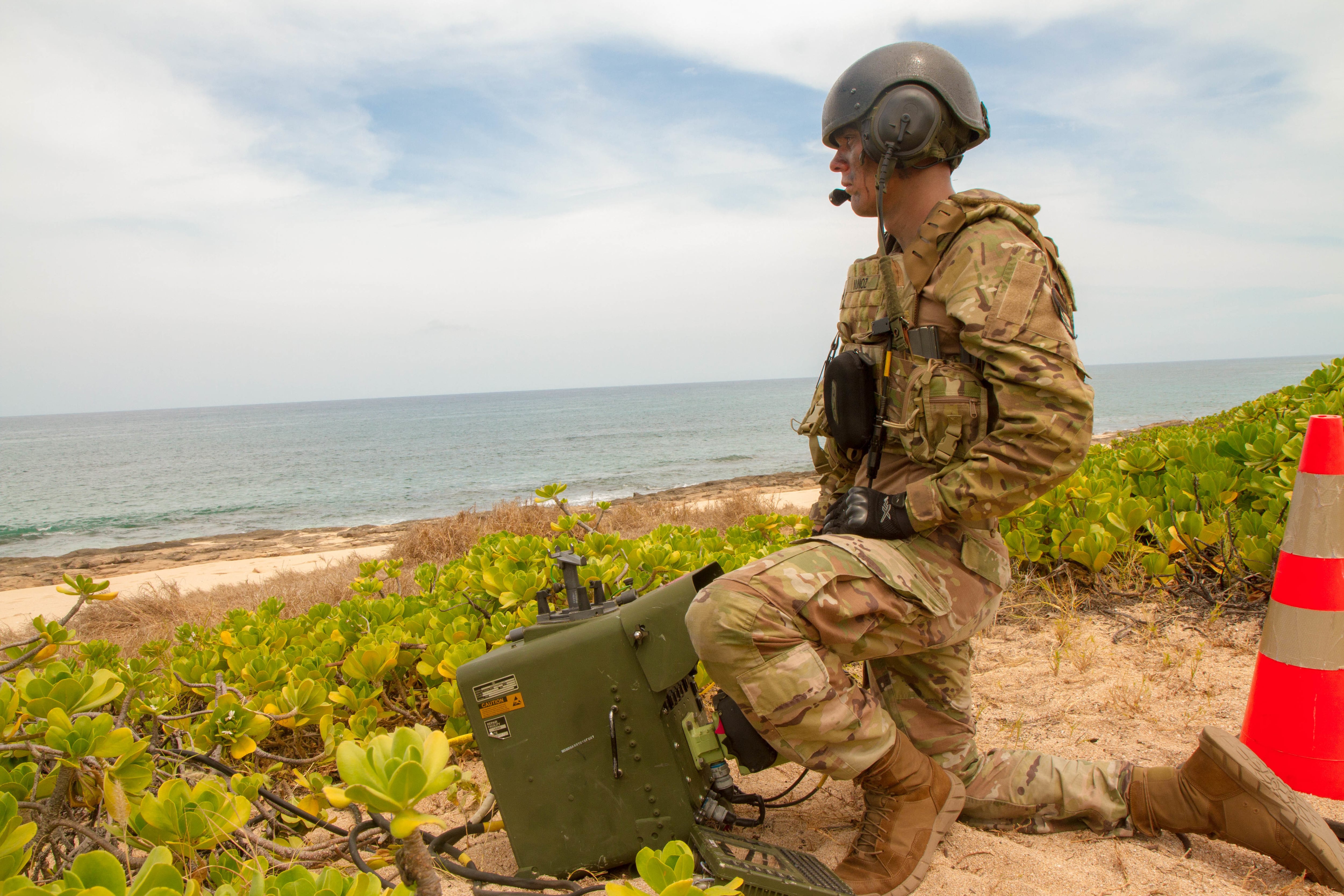Over the weekend, U.S. soldiers and airmen in the Pacific saw the conclusion of what their commanders termed an “agile combat deployment” of at least 4,000 troops across the islands of Oceania.
More than 150 soldiers with the 82nd Airborne Division, 1st Special Forces Group and allies in the Japan Ground Self-Defense Force parachuted into Guam early Friday morning as part of Exercise Forager 2021, which had kicked off on July 11.
Forager is one of two supporting exercises, along with Pacific Iron, supporting Defender Pacific, a large-scale effort to align the United States with partners such as Japan, South Korea and other nations in a combined effort at countering potential Chinese military maneuvers.
RELATED

Forager has been the primary training exercise in support of the Defender Pacific 21 exercise, according to an Army statement.
U.S. Army Gen. Charles A. Flynn, head of Army Pacific, and Lt. Gen. Jon T. Thomas, Pacific Air Forces deputy commander, spoke with regional media during a short press conference Sunday.
Forager is centered on Guam, with reach into the Northern Mariana Islands.
“We are demonstrating our commitment here to the defense of Guam, to the defense of the nation, and to the values and the principles inherent in a free and open Pacific,” Flynn said. “This is the foundation of why we conduct exercises like we have today across the Pacific.”
Thomas shared the goals of the parallel Pacific Iron exercise.
“Pacific Iron is our largest and most comprehensive exercise to date to exercise what we call ‘agile combat employment,’” said Thomas. “We are exercising the ability to disperse a large force to multiple locations and then to operate in intense pace and tempo over a two-week period. This small, agile footprint across multiple locations is how we will conduct operations when the situation may require it and we can do it today at scale.”
Flynn said these and other exercises hit three key areas for regional security:
- Strategic deployment of forces into the region immediately followed by an operational maneuver.
- Command and control of those deployed forces from dispersed locations.
- Rehearsing joint all-domain operations followed by rehearsals of those capabilities.
Forager showcases an ability to rapidly deploy a force to protect Guam as a strategic site. Pacific Iron brought 35 aircraft and 800 airmen into the Indo-Pacific Command area of operations, which included:
- Ten F-15E Strike Eagles from the 389th Fighter Squadron at Mountain Home Air Force Base, Idaho.
- Twenty-five F-22 Raptors from the 525th Fighter Squadron at Joint Base Elmendorf-Richardson, Alaska, and the 199th Fighter Squadron, from the Hawaii Air National Guard at Joint Base Pearl Harbor Hickam.
- Two C-130J Hercules from the 374th Airlift Wing at Yokota Air Base, Japan, to conduct combat dispersal operations in Guam and Tinian.
Ohio Army National Guardsmen with 1st Battalion, 174th Air Defense Artillery Regiment, ran Avenger Air Defense Systems and Sentinel Radars starting in early July on Guam and Tinian, as part of the early stages of Forager.
Alpha and Bravo batteries set up systems at Andersen Air Force Base, while Charlie Battery flew to Tinian, in the Northern Mariana Islands, on CH-47 Chinooks in late July, according to the Army.
“It gives our Soldiers that real-feel,” said Ohio National Guard Capt. Abby Schroll, Charlie Battery Commander of the 1-174th, in an Army news story. “You train as you fight. This gives us the confidence to go and be able to conduct our operations successfully.”
Both Pacific Iron and Forager are supporting exercises for the much lager Pacific Defender event, a division-sized exercise across INDOPACOM.
The larger exercise is growing in scale to match Defender Europe, which brings together U.S. forces stationed on that continent with forces deployed from the United States mainland, along with partners and allies in Europe. Defender Europe is aimed at countering potential Russian military maneuvers.
As Forager and Pacific Iron conclude this week, soldiers, sailors, airmen and Marines have also wrapped up a 17,000-troop exercise, Talisman Sabre, on water and in costal areas of Australia, simulating an attack on the country by the Chinese Navy.
More than 100 paratroopers from 4th Infantry Brigade Combat Team, 25th Infantry Division, conducted a parachute jump from Royal Australian Air Force C-17A Globemaster III aircraft onto a drop zone in northeastern Australia on July 28.
Todd South has written about crime, courts, government and the military for multiple publications since 2004 and was named a 2014 Pulitzer finalist for a co-written project on witness intimidation. Todd is a Marine veteran of the Iraq War.



